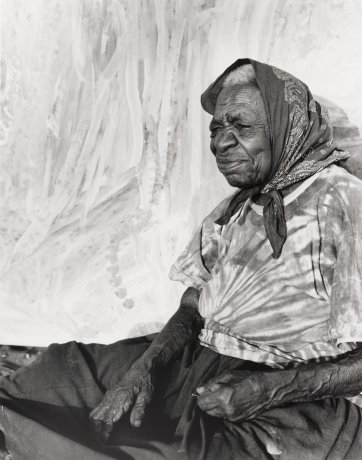Emily Kame Kngwarreye (c. 1910–1996) is one of Australia's most significant artists. An Anmatyerre woman, Kngwarreye was born at Alhalkere, Utopia Station in the Northern Territory. After her ancestral land was appropriated for cattle grazing, she worked as a stockhand. As she grew older she became a leader in Awelye (women's business), experienced in ceremonial body painting. In 1977 she was a founding member of the Utopia Women's Batik Group and collaborated in the production of batik, an important industry for the Anmatyerre after they regained land title. Kngwarreye began to paint on canvas late in life, in 1988. She held her first solo exhibition in 1990 at Utopia Art Sydney, and her popularity grew. During her brief career she produced thousands of canvases depicting the flowers, roots, dust and summer rains of her Country, the translucent colours built up with layered touches of paint to create an illusion of depth and movement. After her death in 1996, Kngwarreye's work represented Australia at the 1997 Venice Biennale. In 1998 a retrospective exhibition, Alhalkere: Paintings from Utopia, travelled to three state galleries and the National Gallery of Australia. Ten years later Utopia: The Genius of Emily Kame Kngwarreye, an exhibition of 120 of the artist's works, showed in Osaka and Tokyo. With that exhibition, Kngwarreye was recognised as one of the very greatest abstract artists of the twentieth century.
Collection: National Portrait Gallery
Bequest of Alan Boxer 2014
© Jenny Sages
The National Portrait Gallery respects the artistic and intellectual property rights of others. Works of art from the collection are reproduced as per the
Australian Copyright Act 1968 (Cth). The use of images of works from the collection may be restricted under the Act. Requests for a reproduction of a work of art can be made through a
Reproduction request. For further information please contact
NPG Copyright.




















